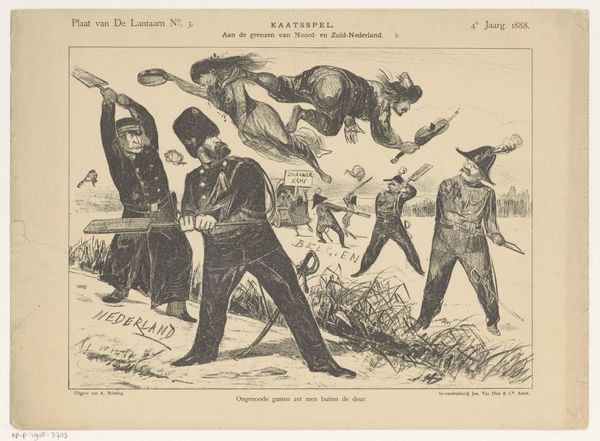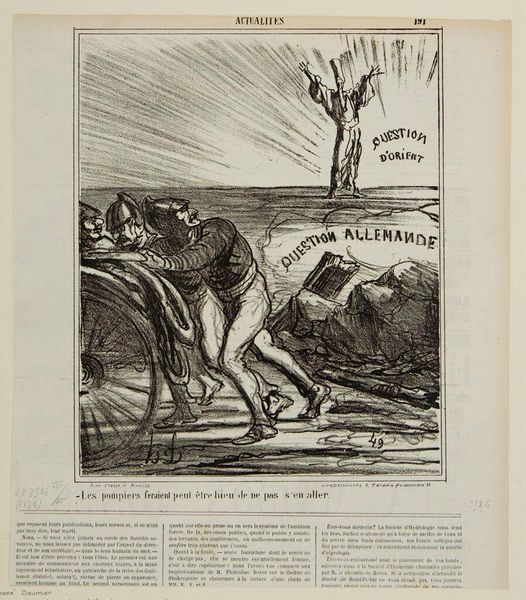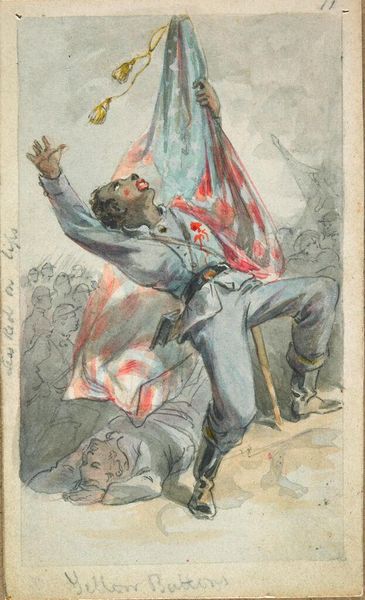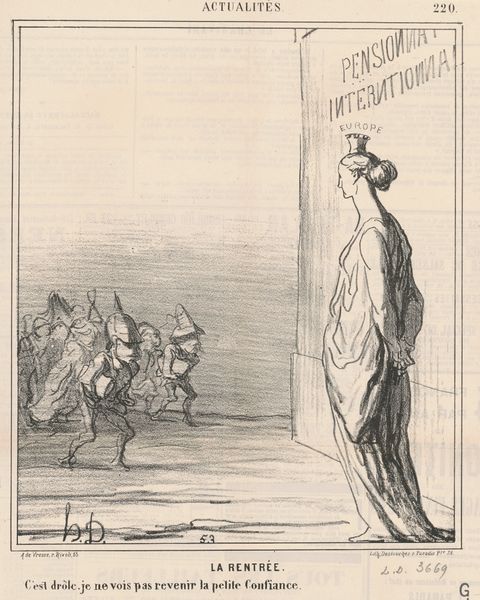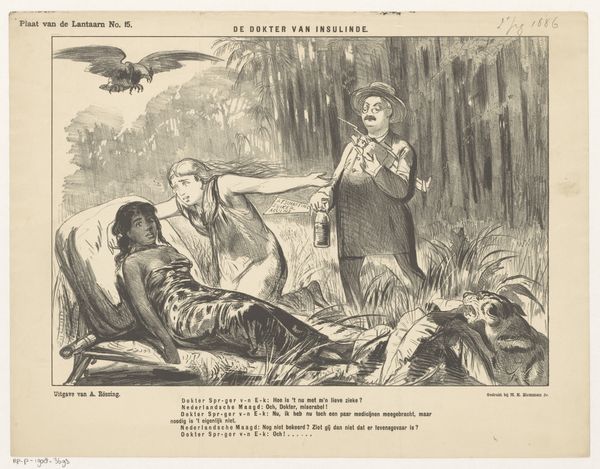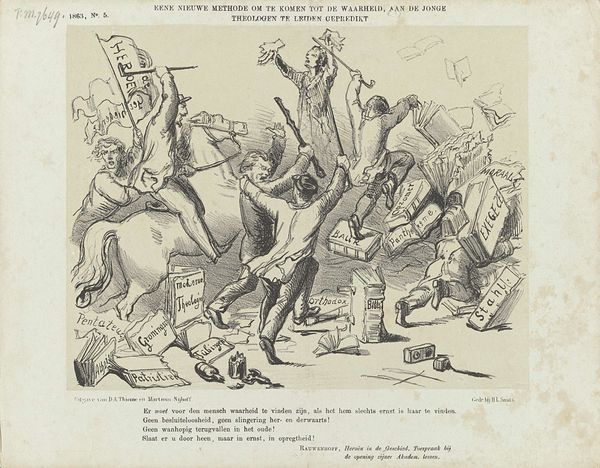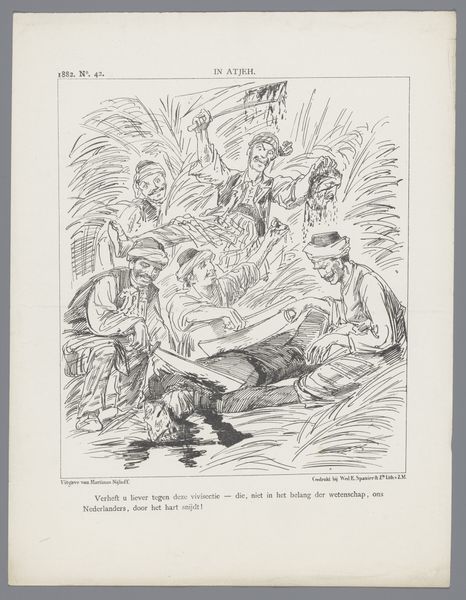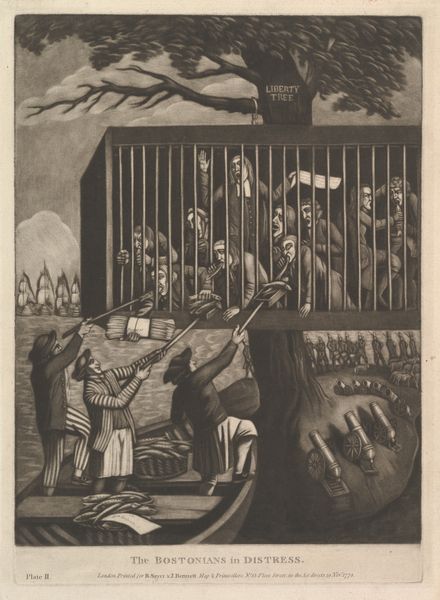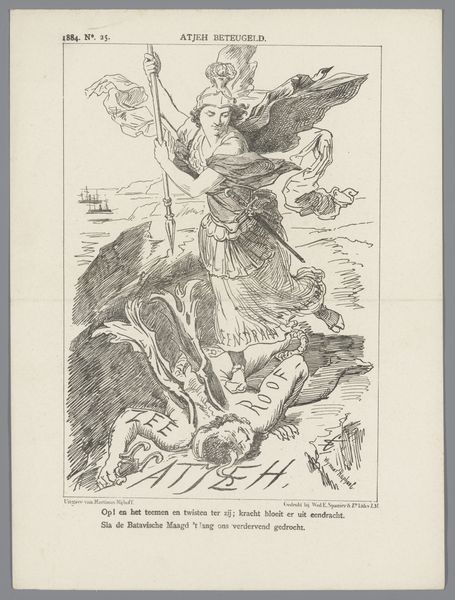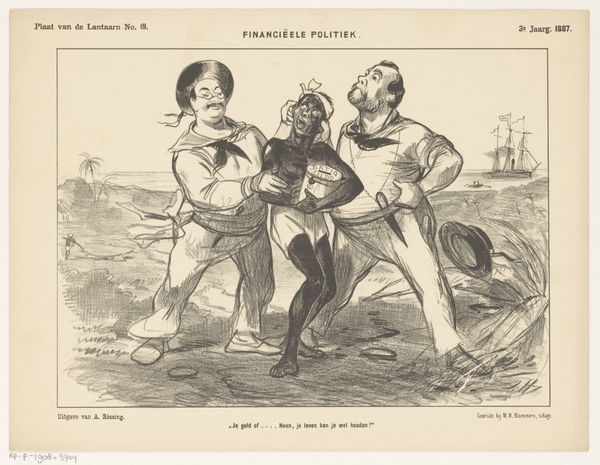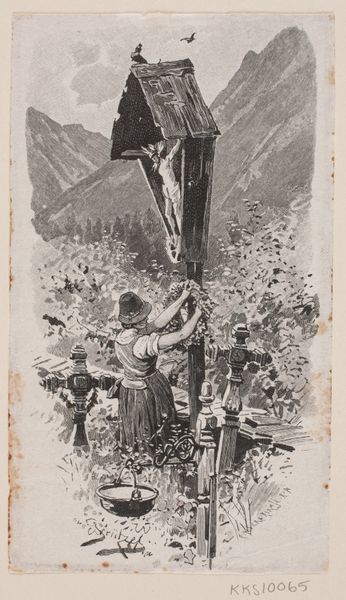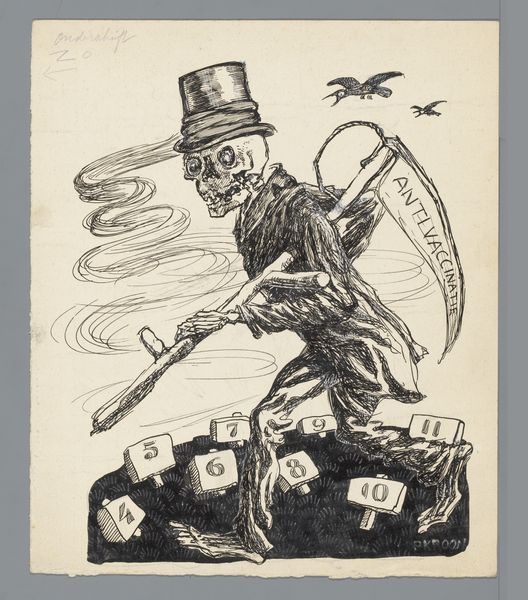
lithograph, print, fumage
#
street-art
#
lithograph
# print
#
caricature
#
caricature
#
fumage
#
symbolism
#
street
Dimensions: height 372 mm, width 337 mm
Copyright: Rijks Museum: Open Domain
Editor: We're looking at "The Cry of the Paving Stones" by Théophile Alexandre Steinlen, a lithograph from 1894. The composition feels incredibly raw and emotional, particularly with the figures emerging from what seems to be the streets themselves. What’s your take on this impactful print? Curator: This print speaks volumes about the socio-political turmoil of late 19th-century France. The figures, rising from the cobblestones, stained with blood, directly reference the Paris Commune of 1871. The text, "Your Republic is the daughter of our blood," implicates the current French Republic, built, according to the print, on the suppression and sacrifice of the Communards. It’s a potent statement on whose stories get told, and whose are erased in the dominant narratives of nation-building. How do you see Steinlen positioning the viewer? Editor: I guess he's challenging the viewer, demanding we acknowledge this bloody foundation. Is there a reason why he might have depicted it as if they’re literally rising from the stones? Curator: The lithograph powerfully evokes a sense of the past erupting into the present. The ‘cry’ from the paving stones isn't just about remembering; it's about unfinished business, unfulfilled promises. Consider the symbolism: the stones as foundation, the blood as a cost, the raised hands as both a cry for help and a demand for justice. It urges us to interrogate power dynamics. Where does the 'street' stand as a cultural touchstone of class struggle in Paris? Editor: It sounds like this image serves less as a historical record, and more as an active call to address social injustice, which can also apply to the present. Curator: Precisely. It questions the very nature of progress and who benefits from it, which remains incredibly relevant in today’s conversations around equity, memory and social change. It forces a confrontation with history. Editor: I'll definitely see Steinlen's prints in a different light from now on, considering their potent connection to broader narratives.
Comments
No comments
Be the first to comment and join the conversation on the ultimate creative platform.
